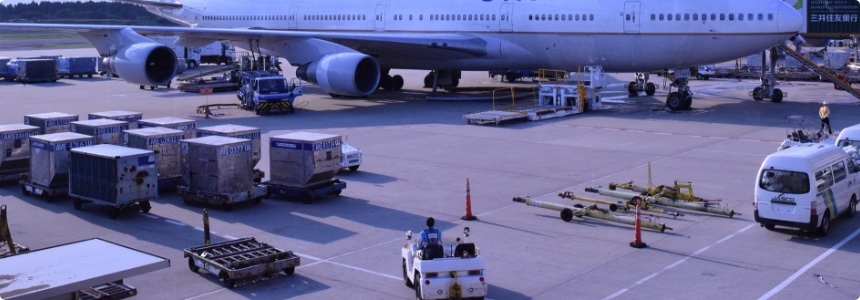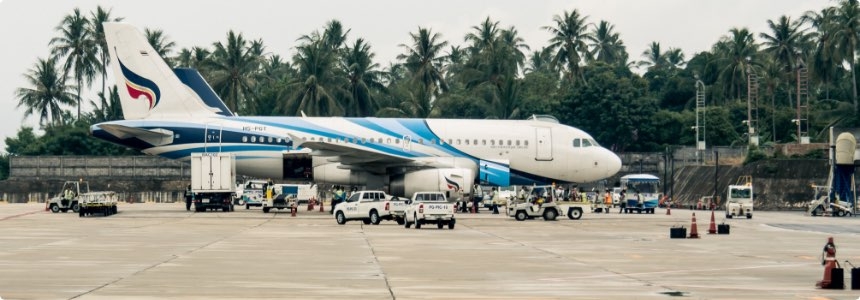Preventive Maintenance Procedures For Airplane Tugs

Regular maintenance and repairs are necessary for airplane tugs in order to avoid costly damage and downtime — this includes preventive maintenance. The term “preventive maintenance” encompasses taking measurements, running tests, cleaning, lubricating, repairing, replacing aircraft tug parts, making adjustments and conducting regularly scheduled overhauls. Sometimes, this involves finding a new aircraft tug for sale when it comes time to replace your old unit.
At the end of the day, your service is only as reliable as the ground support equipment (GSE) that supports your aircraft. As such, a qualified and experienced technician must conduct your inspection and maintenance routines.
Today, we’re familiarizing you with some of the required preventive maintenance procedures that should be a regular part of your airplane tugmaintenance checklist. Keep in mind that this list is in no way exhaustive and you should consult your aircraft tug manual for a full preventive maintenance procedural guide.
1. Inspect Your Aircraft Tug’s Towbar
First off, before each use of a towbar, you should verify that the correctly sized towbar and towbar head are in place for the style of aircraft that is being transported. You’ll then want to conduct a visual inspection, checking for loose, broken or missing bolts and shear pins, and ensuring the towbar is both straight and secure.
You should also inspect the lift cylinder for any potential leaks or cracks. Check for a deteriorating outer sleeve as well. Be sure to record the results of your aircraft towbar inspection in your preventive maintenance logbook, and note any additional aircraft tug parts that may be damaged.
2. Check All Fluid Levels & Engine Compartments
Next, you should always check your GSE’s fluid levels. This includes engine oil, coolant, transmission fluid, brake fluid and power steering fluid. Be sure to top off fluids that are low, being careful not to overfill, and ensure the caps are securely in place. If your aircraft tractor is diesel-powered, visually check the fuel filters and, if needed, drain the water.
You should also conduct a visual inspection where any airplane tugs have been parked. Look for puddles that might indicate a leak of critical fluids. At this time, you should also check over your wiring, hoses and tubing, looking for leaks and any signs of damage. Record the findings in your logbook. Then, remove any dust from your air cleaner dust valve.
3. Look Over The Tires & Rims
During your walk-around inspection, check your airplane tug's tires and rims. The tires should be inflated to the proper pressure per the manufacturer’s specifications. You should also check for any abnormal wear, under inflation, cuts, breaks or objects that are stuck in the treads. This is also a good time to grease the axles and bearings.
4. Conduct Operational Checks
While your airplane tractor is running, take the time to conduct your operational checks. These include, but are not limited to, the following:
- Make sure your dash panel is free of errors and warnings.
- Verify that the oil pressure and battery voltage are within the normal operating range.
- Check that the horn is operational.
- Ensure the lights, flashers and beacons (if equipped) are working correctly.
- If you have a cab equipped, ensure the windshield wipers, heaters and fans are operating properly.
Safety Precautions When Working On Equipment
If you or one of your technicians will be working on your equipment, there are a few safety precautions that should be taken. Understand that these are general warnings and you should always follow your aircraft tug manufacturer’s guidelines when working on your GSE.
- Wear safety glasses to protect the eyes.
- Utilize safety stands when under equipment.
- Set the parking brake and disconnect the battery when working.
- Operate the engine in a well-ventilated area.
- Keep yourself and your clothing away from moving parts (like fans and belts) when the engine is running.
- Avoid contact with hot metal parts (radiators, exhaust manifolds, tailpipes, mufflers or catalytic converters).
- Do not smoke when working on equipment.
- Remove jewelry and loose-fitting clothing when working on equipment to avoid injury.
- Tie back long hair securely behind your head.
- Keep hands and other objects clear of the radiator and blades.
- Disconnect electric cooling fans when working under the hood.
The most crucial part of any successful preventive maintenance program is accountability. Instill in your employees the confidence to inspect and repair equipment whenever necessary.
Preventive maintenance allows you to handle potential issues before they turn into major problems. This means your business can make repairs on your own timetable rather than running equipment up until a breakdown occurs, totally disrupting operations.
Let Eagle Tugs Help You Find Your New Aircraft Tug Today
At Eagle Tugs, we’ve been pulling for you since 1969. We understand that each customer has unique needs that require unique solutions. Our airplane tugs are known around the world for their superior functionality and reliability. Let one of our Eagle Tugs specialists help you find the perfect model for your needs. Get a quote today. And don’t forget to read up about safe aircraft towing procedures for when it comes time to operate your new GSE.
Related Articles
 AIRCRAFT TOWING PROCEDURES Runway towing is a very precise operation and one that can be hazardous if you aren't following the proper taxiing procedures. There are many moving parts and ever-changing conditions that you have to account for at all times.
AIRCRAFT TOWING PROCEDURES Runway towing is a very precise operation and one that can be hazardous if you aren't following the proper taxiing procedures. There are many moving parts and ever-changing conditions that you have to account for at all times.  HOW TO MAXIMIZE COST SAVINGS AND MAKE THE MOST OF AN AIRPORT GROUND SUPPORT EQUIPMENT FLEET Operating, maintaining and repairing an airport ground support equipment (GSE) fleet can be expensive. But by streamlining and maximizing the efficiency of ground...
HOW TO MAXIMIZE COST SAVINGS AND MAKE THE MOST OF AN AIRPORT GROUND SUPPORT EQUIPMENT FLEET Operating, maintaining and repairing an airport ground support equipment (GSE) fleet can be expensive. But by streamlining and maximizing the efficiency of ground... THE ADVANTAGES OF HAVING GROUND SUPPORT EQUIPMENT MAINTENANCE PLANS IN PLACE There are countless reasons why having an airport ground support equipment maintenance and repair plan in place is so vital. These procedures help to minimize downtime and prolong your equipment's service life...
THE ADVANTAGES OF HAVING GROUND SUPPORT EQUIPMENT MAINTENANCE PLANS IN PLACE There are countless reasons why having an airport ground support equipment maintenance and repair plan in place is so vital. These procedures help to minimize downtime and prolong your equipment's service life...

